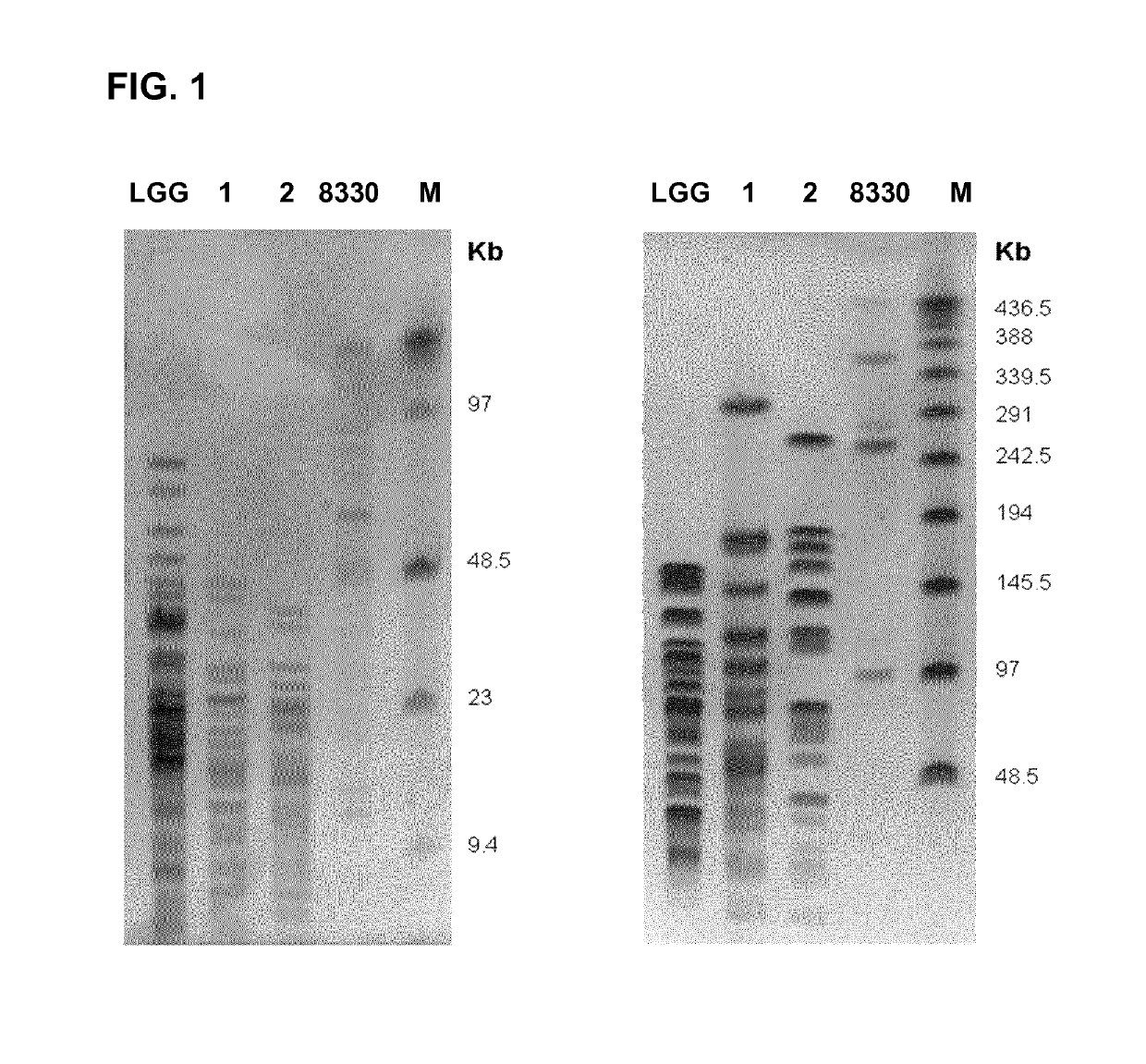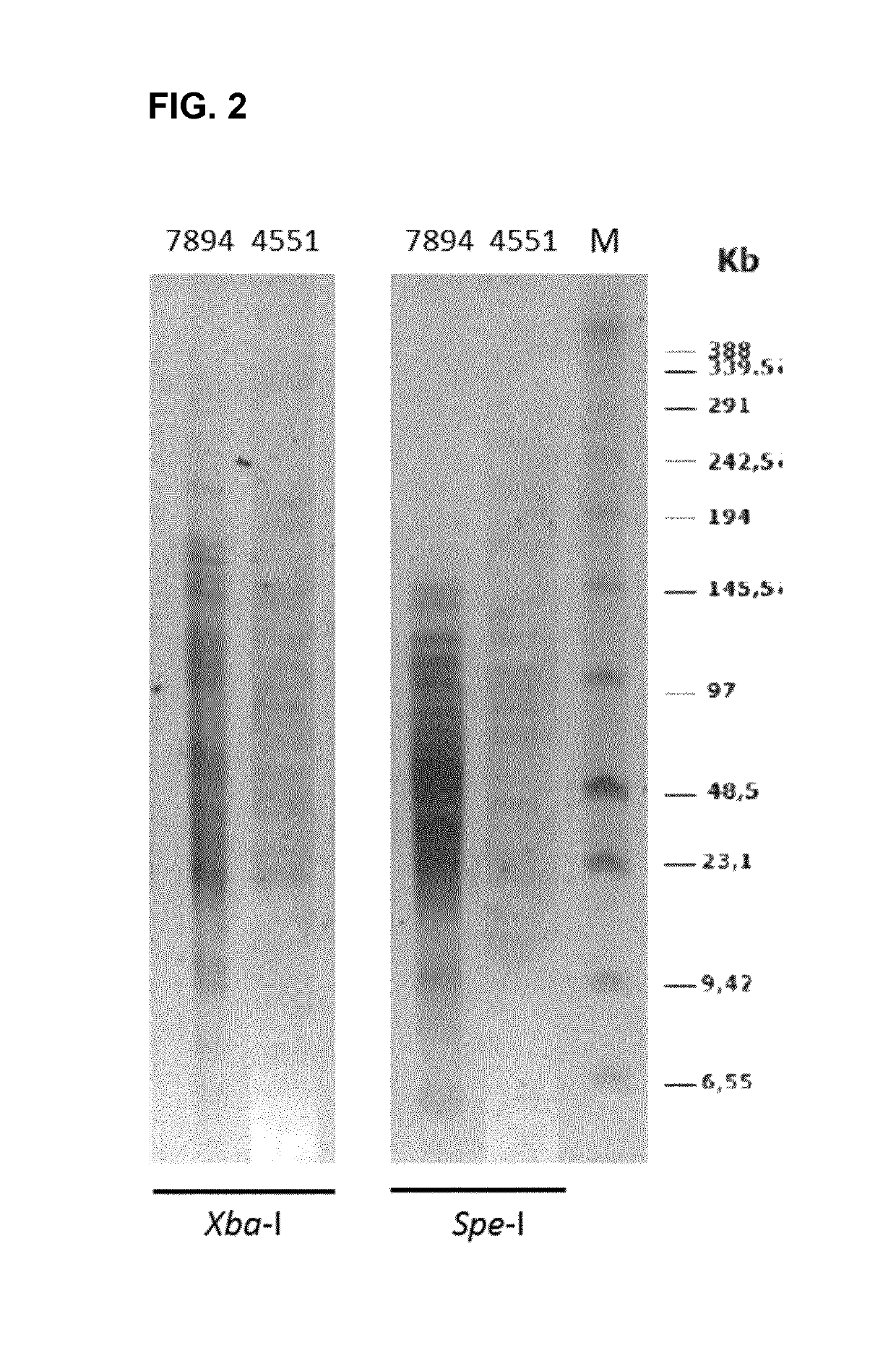Probiotic for infantile colic
a technology of probiotics and infants, applied in the field of infantile colic, can solve the problems of increased risk of poor mental health, increased risk of infants crying over three months, and increased risk of adverse outcomes for infants, and achieve the effect of increasing the synthesis of cytokines
- Summary
- Abstract
- Description
- Claims
- Application Information
AI Technical Summary
Benefits of technology
Problems solved by technology
Method used
Image
Examples
example 1
Evaluation of the Ability to Induce IL-10 Production in an Intestinal Mucosa Model
[0112]The immunomodulatory capacity of the bacterial strains resulting from its interaction with the digestive tract's immune system (often referred to as gut-associated lymphoid tissue, GALT) was studied. More specifically, it was sought to test whether the bacterial strains have the ability to induce the production of anti-inflammatory IL-10 to reduce the inflammatory intestinal tract. The molecular basis for this is the interaction of probiotics cell surface receptors with TLR-2 and TLR-4 (Toll like receptor) that can be found on dendritic cells present in the Peyer's plates.
THP-1 Cell Line
[0113]The selected model was the cell line THP-1, which expresses TLR-2 and TLR-4. This model is sensitive to bacterial components like lipopolysaccharide—LPS—(as inducer of the inflammatory response), and is susceptible to modulate cytokine production when there are molecules in the medium suitable for the induct...
example 2
m Capacity Against Intestinal Bacteria
[0128]The objective was to assess the ability of bacterial strains to antagonize undesirable members of species commonly abundant in infants with excessive crying.
[0129]The protocol used for detecting and evaluating these capabilities is known as Campbell protocol. This technique involves incubating the bacteria to be antagonized in Petri's plates with cylinder sections of uniformly seeded confluent agar plate of the probiotic strain. The halo of growth inhibition around the cylinder section is measured.
Medium
[0130]Pathogen strains were grown in Oxoid medium. It was a standard commercial available Oxoid medium (Oxoid CM0359).
Incubation and Measurement
[0131]Pathogen strains were swabbed uniformly in plates containing Oxoid medium and grown to confluence in a CO2 incubator at the appropriate temperatures and % CO2 for the growth of each pathogen. Then, two 6 mm diameter cylinder sections of a uniformly seeded confluent agar plate of the probiotic ...
example 3
tion of Gas
[0135]Heterofermentative bacteria produce CO2 and ethanol, as well as lactic acid, by glucose fermentation following the metabolic pathway:
1 Glucose→1 Lactic acid+1 Ethanol / Acetic acid+2 ATP+1 CO2
[0136]The production of CO2 by the strains was determined. As it is shown in the formula, the production of CO2 is also informative of the production of ethanol. The production of CO2 was determined using the Durham Tubes technique, which is based on the incubation of the probiotic strain in heterofermentation broth in tubes containing smaller and inverted tubes inside, where the gas is accumulated when it is produced (Pilone, G. J., et al., “Characterization of wine lactic acid bacteria: single broth culture for tests of heterofermentation, mannitol from fructose, and ammonia from arginine”Am J Enol Vitic 1991, vol. 42, pp. 153-157).
[0137]The strains CECT 8330 and CECT 7894 did not produce gas. L. reuteri used as a control, did produce gas.
PUM
 Login to View More
Login to View More Abstract
Description
Claims
Application Information
 Login to View More
Login to View More - R&D
- Intellectual Property
- Life Sciences
- Materials
- Tech Scout
- Unparalleled Data Quality
- Higher Quality Content
- 60% Fewer Hallucinations
Browse by: Latest US Patents, China's latest patents, Technical Efficacy Thesaurus, Application Domain, Technology Topic, Popular Technical Reports.
© 2025 PatSnap. All rights reserved.Legal|Privacy policy|Modern Slavery Act Transparency Statement|Sitemap|About US| Contact US: help@patsnap.com



